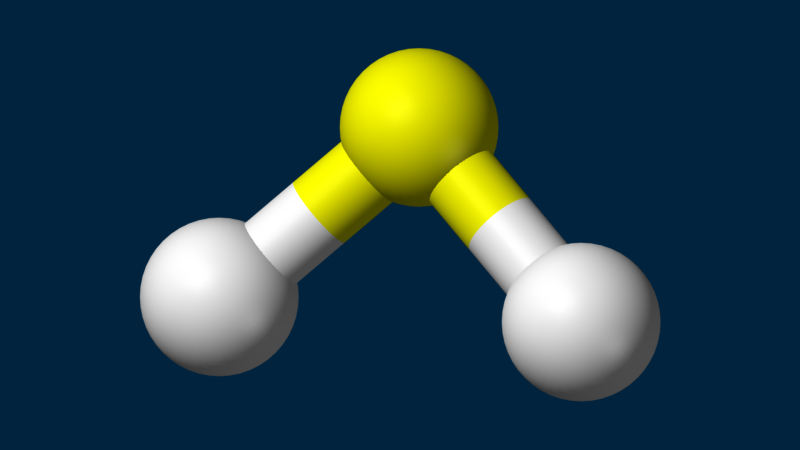
Study shows hydrogen sulfide (H2S) dimer contains hydrogen bonds, just like water
A recent study on the chemical structure of hydrogen sulphide, a gas that smells like rotten eggs, has debunked a widely held belief on how the molecules of the gas, in its dimeric state, are held together. The study, published in the journal Angewandte Chemie, found that dimers of H2S are held together by hydrogen bonds, like those between water molecules, and not by distance dependent attractive forces. The study team consisted of researchers from the Indian Institute of Science (IISc), Bengaluru, Indian Institute of Science Education and Research (IISER), Pune, National Institute of Standards and Technology, USA, University of New Castle, U.K. and VU University, Amsterdam, The Netherlands. The study was supported by the Department of Science and Technology, India and the European Research Council.
Atoms and molecules in any compound are held together by chemical bonds formed between them. A hydrogen bond is one such bond that is weak and is formed when a hydrogen atom, bonded to a strongly electronegative atom, exists in the vicinity of another electronegative atom with a lone pair of electrons.
“Hydrogen bonding is crucial to all life on earth. It plays a crucial role in the structure of the DNA and in passing the genetic code,” explain the researchers, talking about its significance.
Studies have shown that in ice, each water molecule, made up of hydrogen and oxygen atoms, is surrounded by four other water molecules. However, in the case of solid hydrogen sulphide, each molecule is surrounded by 12 hydrogen sulfide molecules. This difference in the structure of these two compounds led to many scientists, including Nobel Laureate Linus Pauling, to believe that the two compounds are bonded by different types of bonds.
While water had hydrogen bonds, hydrogen sulphide molecules were thought to interact with each other through a weak molecular force called Van der Waals interactions. “The dramatic difference between the condensed phases of water and hydrogen sulfide led Pauling to conclude that the structure of water ice is mediated by hydrogen bonds whereas the structure of solid hydrogen sulfide is determined by van der Waals interactions,” say the authors. So far, there was no conclusive evidence to contradict Pauling’s view.
In the current study, the researchers used a technique called ‘microwave spectroscopy’ to examine the dimeric structure of the hydrogen sulfide molecules formed at an ultra-low temperature.
“The microwave spectrum of the hydrogen sulfide dimer reported herein provides the first unambiguous experimental confirmation that the hydrogen sulfide dimer is hydrogen bonded,” argue the authors.
The study also found that in a dimer of hydrogen sulfide, the distance between the hydrogen atom in one molecule and the sulfur in the other molecule is less than the sum of their combined van der Waals radii. The hydrogen bond angle was found to be around 180 degrees.
The researchers hypothesise that akin to how water molecules undergo some tunnelling motions and permit each of its four hydrogen atoms to participate in the hydrogen bonding, hydrogen sulphide too may have some such process in place.
“Further studies of the dimer, with a detailed analysis of the tunnelling levels, will be published in future”, they conclude on their future research plans.






